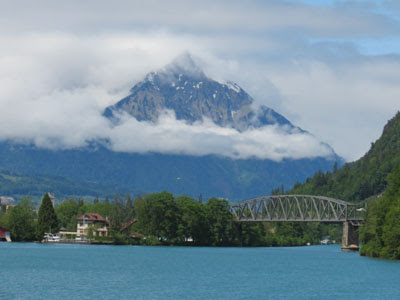Travel can be challenging under the best of circumstances, so kindness to others is paramount. While I always try to smile and be pleasant--the least I can do--I've been the recipient of someone else's kindness many times, including this incident from several years ago.
Sometimes we don’t even realize that we
need help. Then an angel appears in the most unlikely of places. For me it was Miami International Airport, a huge complex of terminals filled with masses of
humanity from many nations, all trying to navigate through unfamiliar territory.
 |
| Familiar views in Old Havana |
After the embargo on travel from the
United States to Cuba was lifted, we embarked on a people-to-people tour to
better understand a country that had been off limits for more than half a century.
During nine days on the island our organized group traveled more than 1100
miles, learning about life in Cuba through various conversations and
activities.
The trip was educational and enjoyable—until
our arrival in Havana, our last stop before returning to the United States.
There, my husband Larry was hit with a horrible bout of food poisoning. By the
next day, half of our travel group had succumbed to the same malady.
A trip to a Cuban hospital confirmed that he had no serious medical problems, so he was dismissed without receiving any antibiotics or intravenous fluids that might have hastened his recovery. His stomach eventually settled, but he remained extremely weak, sleeping in our hotel room until departure day.
 |
| Square in Old Havana, Cuba |
When we arrived at the Havana airport, I
requested a wheelchair, but the only two available had already been given to
other passengers. Our guide managed to move us to the front of the check-in
line, and a couple of compassionate American tourists let us move ahead in the
security line.
Getting through the required procedures was
still an ordeal. The wait was long—flights originating in Cuba can be
unpredictable—and the plane ride to Miami was noisy, stuffy, and bumpy.
As I watched Larry’s stamina evaporate,
I realized that he wouldn’t be able to walk through the Miami airport, stand in
a long line for immigration, and then fly back to Austin. I envisioned him
passing out on the floor of the busy terminal and me hovering over him--useless.
So when the plane landed in Miami, I asked
the flight attendant if we could get a wheelchair. Because I had not requested
it prior to landing, we had to wait awhile. We disembarked and sat on an empty bench
in the hallway.
Eventually a small, thin man arrived
pushing an empty wheelchair. Although I expected him to drop it off and for us
to take over, he had no intention of leaving. Quickly and expertly he
positioned my husband and our small suitcases on the mobile chair and said, “Follow me.”
Tired and bedraggled, I did as told.
Then we walked…and walked.
“It’s
a long way,” said the man I named Angel in my mind. That was an
understatement, but fortunately he knew exactly which corridors to take and
where the elevators were located. Even though he knew how to avoid long lines, the
process was still arduous.
 |
| Maneuvering a wheelchair through an airport can be challenging. |
Once through immigration, another ordeal
began. Dehydrated and limp, it was clear that Larry simply couldn’t manage
another flight that day, so we needed to change our return flight. Angel took
us up and down elevators, helped us claim our baggage and wander through more
terminals, and finally led us to the appropriate ticket counter. More waiting and
checking schedules, but yes, there was a flight available the next day.
Our relief was short-lived as Angel then
mentioned that it was Spring Break and a big concert was scheduled in Miami that
evening. “Make sure you can get a room
before changing your flight,” he warned. “Accommodations
are really booked up.”
“Oh,
really? How do we accomplish that?” I asked as a twitch worked its way across
my face. Spending the night in the airport was simply unthinkable.
We went back to the baggage area where a
kiosk was set up with phones and hotel numbers, so passengers could make
reservations directly. At least that’s how it usually works.
I punched all the numbers, receiving one
frustrating “Sorry, we’re filled,” response
after another. When I finally found an available room—at a stiff price I’d
never pay under other circumstances--I just said “Thank you” and sighed heavily.
Even better, the hotel had a shuttle, so we didn’t have to search for transportation.
 |
| Miami International Airport is one of the busiest in the world. And it is very large. |
But the flight change we inquired about earlier
was never actually booked. Tired and thirsty, we trekked upstairs again to the
ticket counter, hoping the original agent, who had offered to rebook without charge
on medical basis, was still there.
By this time Angel had been maneuvering
the wheelchair and our bags around the airport for more than two hours. Although
I attempted to help, he took charge. Humbly, I followed.
Finally, with the new flight booked, we
headed back downstairs, called for the hotel’s shuttle, and waited for the van to
arrive.
During those few minutes of relative
calm I realized how necessary Angel had been during this difficult situation. I
was exhausted physically and emotionally and could never have managed without
his help and patience, not to mention his knowledge of the airport’s layout and
procedures. Angel’s capable, guiding presence was a kindness I’ll never forget.
Photos from Beverly Burmeier and free sources.
































